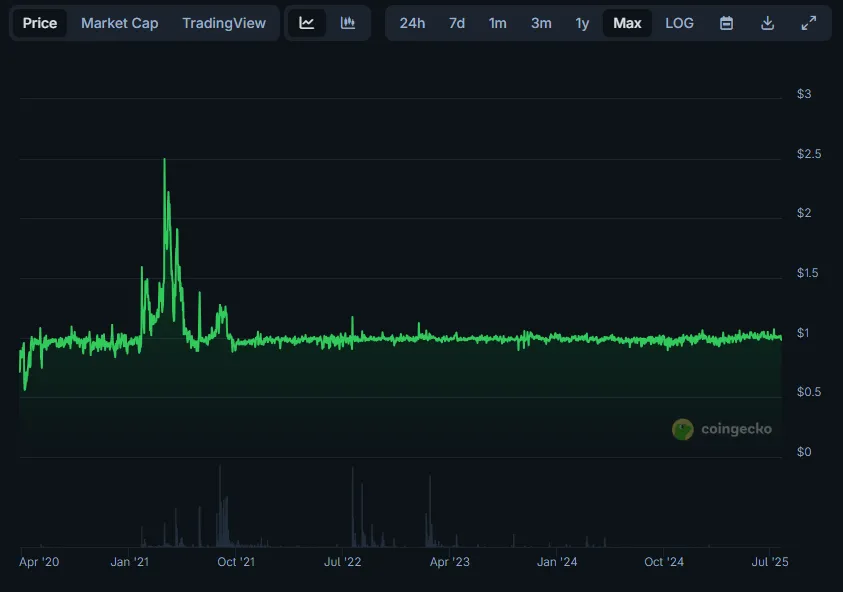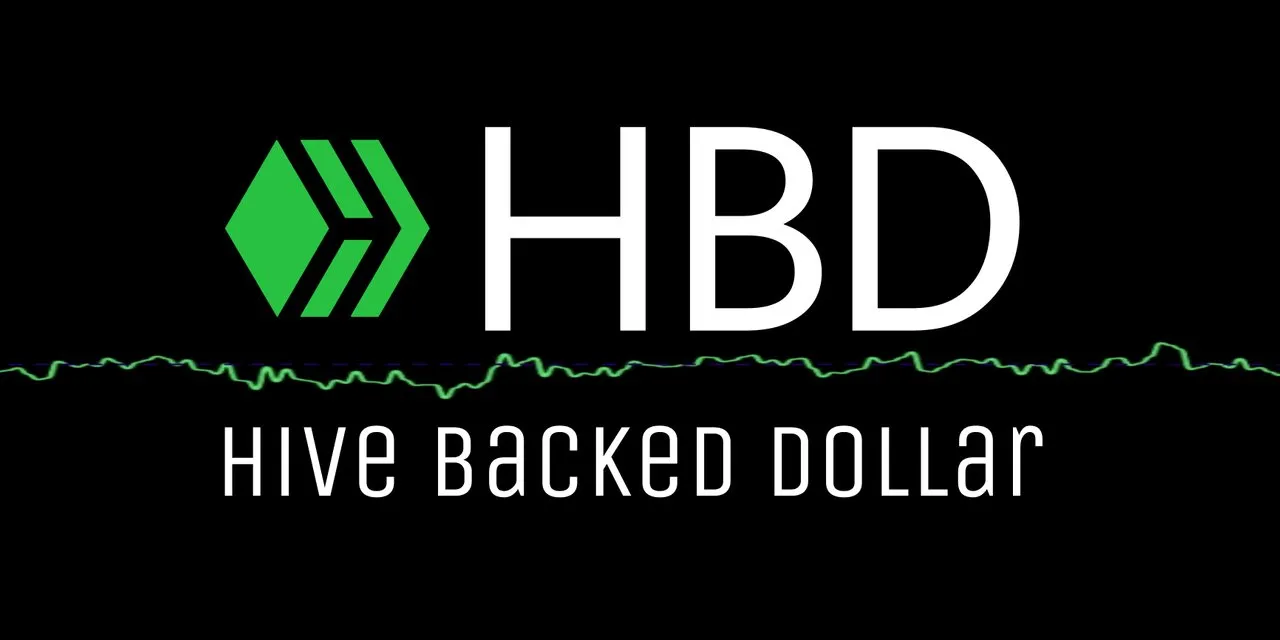Stablecoins get more and more crucial for economy but bear centralization risks and regulatory pressure. Hive’s HBD offers - completely unnoticed - something remarkable: a stablecoin that is truly decentralized, censorship-resistant, and way underrated (for now).
What Is HBD?
HBD stands for Hive Backed Dollar, a decentralized algorithmic stablecoin native to the Hive blockchain — a fast (3 seconds block time), feeless (zero (!) transaction fees), and community-governed delegated proof of stake blockchain that emerged from a hard fork of Steem in 2020. Unlike USDT (Tether) or USDC (Circle), which are backed by fiat reserves held in centralized banks and subject to external audits, seizures, or compliance changes, HBD is collateralized and managed entirely on-chain.
Its target value is $1 USD, and its supply is controlled via a combination of blockchain-level debt limits, interest rates (APR), and a dynamic algorithmic conversion mechanism with Hive’s native token (HIVE).
It has a track record of stability since 2020 (with one excursion period in summer 2021).

https://www.coingecko.com/en/coins/hive_dollar
Why You Haven’t Heard of It (Yet)
The biggest reason HBD flies under the radar still is that it was not built by a major VC-funded protocol, doesn’t market aggressively (in fact doesn´t do any marketing) and doesn’t exist on Ethereum or Solana or any other big shot layer 1 protocol. The Hive ecosystem is insular but deeply mission- and community-driven, and most HBD usage today is confined to Hive-native apps like PeakD or Ecency. Additionally it is tradeable on the internal Hive-HBD market (with no trading fees!) and listed on Upbit.
But that’s starting to change. As interest in decentralized finance beyond Ethereum grows—and as governments increasingly crack down on custodial stablecoins, HBD is positioned to become a lifeboat for crypto users seeking sovereignty.
What Makes HBD Special?
True Decentralization
There is no company, no central bank, and no single point of failure behind HBD. Governance is handled by witnesses (Hive’s version of block producers), and all economic parameters are adjusted via on-chain proposals voted on by token holders (=delegated proof of stake). No entity controls the supply, and there’s no issuer who can blacklist any address.No Counterparty Risk
Stablecoins like USDC require you to trust Circle. DAI requires you to trust MakerDAO’s collateral model (which now includes USDC). With HBD, your trust is in code, community governance, and the HIVE token collateral, all transparently verifiable on-chain.Blockchain-Level Stability Mechanism
HBD can be converted to and from HIVE, helping maintain its peg. If the market price drops too low, arbitrageurs buy cheap HBD and convert it to HIVE. If it goes too high, they sell. There is a piece of code called HBD-stabilizer that does that autonomously, 24/7. The system incentivizes balance without relying on centralized pegs or asset reserves.On-Chain Savings Account
HBD holders currently earn 15% APR (dynamically adjusted by governance) simply by locking their tokens in the savings feature. This offers a native DeFi-like yield without the risk of smart contract exploits common on Ethereum or other EVM chains.Feeless Transactions
Hive transactions are free and fast, with block times around 3 seconds. That means you can send HBD instantly, globally, with no gas fees—something even the best DeFi protocols struggle to match.Additional security features
The Hive ecosystem uses easy wallet names like @lazy-ninja or @blocktrades. Your username is your wallet address. No hassle with c&p mistakes of large keys when sending tokens to others. In the background each account has several types of keys with different roles, enhancing security. For e.g. blogging you can grant an app access to the low level key, for financial transactions there is a separate one.
It is reliably working - since years
Real Use Cases:
- Author payments on Hive-based content platforms
- Micropayments and tipping in social apps
- E-commerce cashback initiatives like https://distriator.com/
- Community funding and decentralized proposals
With Hive’s ecosystem maturing, more gateways are opening for using HBD outside of Hive via bridges to other chains.
Challenges Ahead
HBD is not without challenges:
- Currently still low liquidity outside of Hive can make it hard to onboard large users or institutions
- Public awareness is minimal, even among DeFi-savvy users
- Bridges to other ecosystems are still developing
But as governments target centralized stablecoins and demand for self-custody rises, these challenges are opportunities in disguise.
Final Thoughts
If you believe crypto’s promise lies in autonomy, sovereignty and decentralization, then HBD deserves your attention. It’s not flashy, not hyped, and not surrounded by billion-dollar VCs—but it quietly does everything a stablecoin should do, and more.
